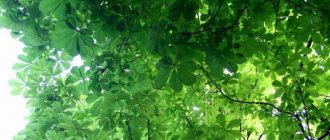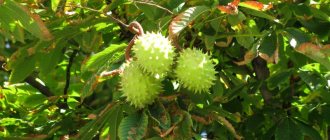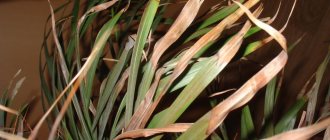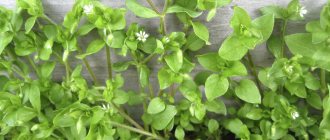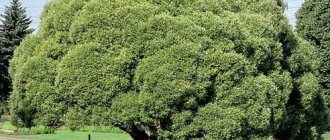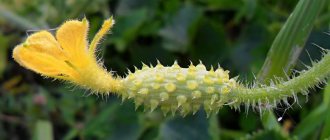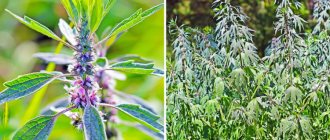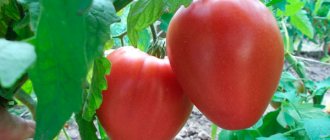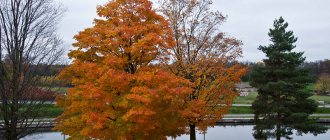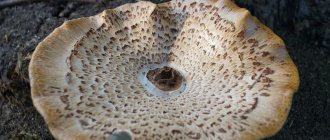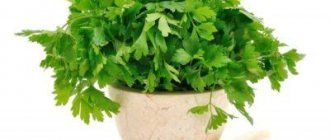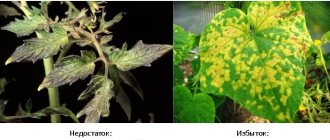Description of the genus
Chestnut includes 14 species; in addition to the actual representatives of the genus Castanea, “chestnuts” are plants from other families. For example, home or Australian chestnut (Latin Castanospermum, legume family) and horse chestnut (Latin Aesculus, Sapindaceae family).
Trees of the genus Castanea have a wide crown and grow up to 35–40 m. The trunk has a girth of 1.5–2 m with dense bark and deep grooves, the branches are red-brown. The chestnut leaf is dark green, 8–25 cm long, simple, leathery, oblong and pointed. The root system is strong, deeply penetrating, with several powerful roots.
Chestnuts bloom in May and are pollinated by insects and sometimes by the wind. Chestnut flowers are small and are lost in the foliage, collected in spikes. Unlike Castanea, horse chestnut flowers are more spectacular: creamy pink in the form of lush double inflorescences, with a tart smell. Chestnut nuts are smooth, sweet, arranged in a cluster with many needles, and ripen in the fall. When the fruits ripen, the plush opens. In some countries (for example, on the island of Corsica), bread is made from the fruits of the tree. Horse chestnut nuts look similar, but are bitter and poisonous, covered with a green shell with sharp thorns.
The lifespan of the plant is about 500 years, but there are specimens of greater age.
Properties
The fruits, flowers and leaves of horse chestnut are actively used in both modern and alternative medicine. This plant is used to eliminate the following ailments:
- Inflammatory processes in the body and swelling. Tinctures based on the plant have anti-inflammatory and anti-edematous effects.
- Thrombosis. Chestnut tree significantly reduces blood clotting and prevents the formation of blood clots. Also, medications based on it are used for uterine bleeding in women.
- Increased acidity of gastric juice. The plant normalizes this indicator, making it indispensable for exacerbation of gastritis.
- Impaired functioning of the gallbladder. Chestnut normalizes the motor function of this organ.
- Cough, bronchitis, bronchial asthma. The plant promotes the removal of phlegm and improves the general condition of the body.
- Arthrosis, arthritis, gout. Ointments based on this chestnut relieve pain and inflammatory processes that are observed in joint tissues in these diseases.
- High blood pressure. Chestnut is one of the most effective ingredients in herbal treatment of hypertension. It also improves the functioning of the cardiovascular system in general.
Due to its anti-inflammatory effect, chestnut fruits are used to prepare ointments and creams for trophic ulcers.
Chestnut also has medicinal properties. Different parts of the plant contain glycosides, coumarins, thiamine and vitamins C, tannins, carotenoids, flavonoids and pectins.
They help treat thrombosis and eliminate edema. They are beneficial for arthritis, bleeding, cardiovascular diseases, anemia and other problems.
Types of chestnut
There are 3 species of chestnut (genus Castanea) growing in Russia. Among them:
- Sowing or edible (C. sativa). The most common species in our country. A large, fast-growing, unpretentious tree reaches 35–40 m. The crown is compact in the forest and spreading when planted individually. The leaves are lanceolate, deep green in summer and turning yellow in autumn.
- Toothed or American (C. dentata). Up to 30 m, rounded crown. The most winter-hardy type of chestnut, it can withstand temperatures down to –37 °C. The nuts are smaller and sweeter than those of other species.
- Japanese or crenate (C. crenata). Tree up to 15 m tall with burgundy-brown shoots and heavy fruits. Prefers a warm climate, found in Adler. Compared to other species, it is weakly susceptible to fungal diseases. Interesting decorative chestnut varieties include Pendula Miyoshi with drooping branches.
All species have tasty and nutritious fruits, consumed raw, boiled and baked.
How to distinguish edible and inedible chestnuts
You can distinguish noble fruits from horse fruits by their appearance, by the foliage of the tree, its flowering and taste.
Chestnut foliage and flowering
Trees that bear edible fruits are distinguished by their foliage. The leaves do not grow in digits, like those of an inedible plant, but one after the other.
Horse chestnuts have amazing flowering, the beauty of the flowers will be noticed by everyone. And you can walk past a flowering tree with edible fruits and not see the flowers. From the second half of spring you can admire the unique beauty of the blooming horse chestnut and enjoy the unsurpassed aroma. Flowering on trees lasts several weeks.
Appearance and height of the tree
A plant that produces edible fruits higher than the horse variety. Depending on the species, it can grow to a height of 35 m. Trees of various types have a beautiful, wide crown.
Wild chestnut rarely exceeds a height of 15 meters, but some specimens reach 25 meters. Shrubs that have a height of 1.5 - 3 meters also grow. The trees have a beautiful, dense crown.
Fruit size and covering
The difference lies in the size of the core. Edible ones are smaller than horse ones. The inedible fruits are covered with sparse spines, which can be easily removed. Edible ones have multiple spines. This makes them resemble hedgehogs. The skin of the fruit is difficult to peel.
Spreading
Edible chestnut trees are cultivated in southern Europe and North America, and are popular in China and Japan. The plant prefers a warm, temperate climate and naturally lives in mountainous areas. In Russia, chestnuts grow in the southern regions, often found in the Caucasus, forming dense forests, and on the Crimean peninsula. The culture became widespread on the Black Sea coast.
The tree is often adjacent to conifers, beeches and hornbeams. In European countries it is accompanied by Burgundy oak and pine trees.
general information
When growing all varieties of chestnut, you need to have some patience because they do not grow very quickly.
But with careful and proper care, after about 10 years, having outstripped neighboring garden trees in growth, it can become an excellent protection against the sweltering heat in the summer thanks to its thick and lacy foliage. And if necessary, it can also be used as a healer for many ailments. The umbrella-like high crown of the chestnut tree provides good shade, and the surprisingly delicate flower candles of the chestnut tree delight with their beauty and freshness every spring for a couple of weeks. In the wild, this plant grows in many southern countries, but they can often be found as a garden and ornamental crop in the middle zone. Planting and care procedures are not as complicated and expensive as it may seem to beginners. The main thing is to be patient and do everything right.
There are approximately 15 species of this plant around the world. The flowering period depends on the type of plant. The most common species in Russia are noble and horse chestnut, which bloom in early May. Chestnut is an excellent honey plant.
Planting and care
The tree prefers ventilated, illuminated areas and moderately moist, well-drained soil. The plant does not tolerate waterlogging, dry soil and high lime content. Grows well on forest loams. Chestnut grows quickly, so at least 5 m of free space is allocated for the seedling. Planting stages:
- Dig a hole 50 cm deep and wide, fill the bottom of the hole with drainage (crushed stone, crushed brick, pebbles).
- The soil is combined with humus and sand, and 500 g of dolomite flour is added.
- Water it with water and place the seedling in the hole, leaving the root collar at ground level.
- The young chestnut is fixed on a support, the soil is carefully compacted with hands without damaging the plant. If necessary, add soil.
- Water generously with 20–30 liters of water.
The preferred age of seedlings for transplantation is 1–2 years. Young trees are irrigated regularly, adult plants are watered only in the hot summer. The soil around the growing chestnut is loosened several times a year, and before the onset of cold weather, the tree trunk circle is mulched (with hay, bark, peat, sawdust). Fertilize in early spring with manure or complex fertilizers containing phosphorus, nitrogen and potassium.
Preparing for landing
Planting this plant is not difficult, but it is always necessary to take into account the condition of the soil. The planting site should be pre-prepared if the soil composition is unfavorable for this tree. You need to dig a hole, fill it with a mixture of turf soil (three parts), humus (two parts) and sand (one part).
The best period for planting chestnuts is autumn or early spring. These dates should not be shifted, as there is a possibility that the seedling will not have enough time to take root.
Excellent planting material is three-year-old and older specimens.
Reproduction
The plant in its natural environment reproduces by seeds. Fruits profusely from the age of 15. Chestnuts are harvested when they reach full maturity - depending on the variety - at the end of September-October. Harvest frequency is once every 2–3 years. When the chestnuts fall in the fall, they are collected and planted in the soil. They deepen it by 5–7 cm and cover it with leaves. Intact and ripe fruits are suitable for propagation.
When planting in spring, stratification is necessary - a procedure that simulates wintering (cold storage). The fruits collected in the fall are sprinkled with sand for the winter and kept at temperatures up to +4 °C. A week before planting in open ground, immerse in warm water, changing it regularly. The seeds of the plant have high germination rate.
In a year, the tree will grow 30 cm, and by 5 years it will stretch several meters. At a young age (up to 2 years), plants can easily withstand transplantation. Species of the genus Castanea are also propagated by layering, cuttings and root suckers. The tree has a high growth capacity from the stump.
Recipes for diseases
Haemorrhoids. Pour 50 g of bark into a liter of hot water and boil for 15 minutes. Leave for 8 hours. Take a bath with the infusion after defecation for 15 minutes.
Joint pain: 1.5 tbsp. l. dried chestnut flowers per 0.5 l. vodka. Leave for two weeks, then use for rubbing.
Gout: 40 gr. flowers per 1 liter. medical alcohol. Infuse for a week. Use as compresses.
Leukemia: 8 tbsp. l. pour dried flowers into a liter of water, as soon as the water boils, pour the infusion into a jar and leave to infuse for 8 hours, divide the finished product into 5 doses, drink throughout the day.
Bath for dermatological diseases: mix dried leaves, flowers and bark and pour boiling water over it. Leave for 12 hours. A bath with infusion is taken for up to 20 minutes.
Inflammation of veins: 300 gr. fruits per 1 liter. vodka. After 7 days, gently rub the inflamed areas with the tincture.
Varicose veins, hemorrhoids: 50 gr. seeds per 500 ml. vodka. Leave for 7 days. Take no more than 10 drops 3 times a day.
To relieve inflammation and swelling, oil or ointment is also used externally. To prepare, mix fruits and flowers ground into powder. The oil base can be any unrefined vegetable oil. Bring to a boil in a water bath and simmer for an hour.
In order to obtain the ointment, you need to melt 200 g of solid fat in a water bath, add 5 finely chopped seeds and a pinch of flowers to the container, and after boiling, add 20 g. beeswax. The frozen ointment is ready for use.
To treat chronic diarrhea, diseases of the nose and throat, an infusion is prepared: 2 crushed fruits per glass of boiling water. In 2 hours the medicine will be ready. It is taken 5 times a day, 2 tbsp. l.
Diseases and pests
Susceptibility to parasites and diseases significantly reduces the crop population. The most dangerous:
- A rust or fungal disease caused by the pathogen Cryphonectria parasitica has destroyed more than 95% of the scalloped chestnut plantings in the United States. The parasite infects the trunk and shoots, leading to the death of leaves and drying out of the tree;
- ink disease caused by Bleapharospora canibivora. The fungus causes peeling of the bark and weakening of the tree;
- Powdery mildew is a fungal disease (Erysiphales) that begins with leaves located near the ground and gradually spreads to the entire tree, leading to rotting.
Among the insects that are dangerous to the plant are aphids, gallworms, scale insects and weevils.
Stagnation of moisture is undesirable, leading to rotting of chestnut roots and the development of fungal infections. For treatment, spray with fungicides and copper sulfate. It is also necessary to remove the affected branches and areas of bark and treat them with putty or a special garden paste. Insecticides are used against insects.
Meaning and Application
The wood is similar in texture and structure to oak, but is inferior in strength. Wood is easy to process: impregnate with protective compounds, split, glue and tint. The products retain their shape well and are resistant to rotting. Wood is used:
- in shipbuilding;
- when finishing houses;
- for the manufacture of barrels;
- in the production of designer furniture.
Previously, telegraph poles were made from tree trunks, however, since 2012, by order of the Rosselkhoz, the logging of Castanea sativa wood has been prohibited.
Chestnut nuts are tasty and nutritious, rich in carbohydrates and proteins, as well as tannins and vitamins. The fruits contain a lot of potassium, magnesium and phosphorus. The yield per hectare is 1 ton of fruit.
The flowers of the plant are a source of nectar for bees. Despite the bitter taste, chestnut honey is considered valuable and is in demand. The bark, due to its high concentration of tannins, is used in folk medicine.
Chestnut nut and its uses
Chestnut nuts contain starch. They are also rich in fiber, glucose and vitamins. There is almost no fat in this nut, but it is very rich in carbohydrates. There are about 60% of them in its composition. In addition to carbohydrates and fats, chestnut nuts contain proteins. The product is generously enriched with minerals:
- phosphorus;
- potassium;
- calcium;
- sodium;
- magnesium;
- copper;
- iron.
How to cook nuts correctly
Cooking chestnut nuts is easy. It is important to know how to prepare them correctly. The skin of each nut is carefully cut and placed in boiling water. After 3 minutes, they are removed and cleared of film.
Important!
This preparation removes the bitter taste from the nuts. Because of this, many people consider chestnuts inedible.
After the preparatory activities, start cooking. The nuts are poured with cold water and boiled for 20 minutes. When the fruits become soft, drain the water, wrap the saucepan with a warm cloth and leave for 5 minutes. All that remains is to add a little butter to the dish, and the boiled chestnuts can be served.
You may be interested in:
What an oak tree looks like in autumn: description, photo An oak tree is a mighty and spreading tree with heavy, thick branches. It grows in the northern hemisphere. It can be found in…Read more…
Meat sauce
The fruit must be peeled in the same way as before cooking. After this, they need to be placed in meat broth and boiled in it for about 15 minutes. After softening the nuts, mash them with a blender or using a masher. The finished sauce is flavored with nutmeg, cream or butter. You can add a little salt to it.
Autumn chestnut dessert
The nuts are cleaned and pre-processed, then dipped into a boiling mixture of milk and sugar. After the fruits have softened, they are finely chopped or pureed.
The natural power of nuts
You can cook more than just delicious dishes from chestnuts. People have been using their amazing natural power for a long time. Healers believe that gentle massage with a small nut helps with mastopathy. The majestic chestnut is popularly revered as a sunny tree. That is why people carry its fruits in their pockets, fueled by inexhaustible natural power.
Use in landscape design
Horse chestnut (Aesculus) is more often used in landscape compositions rather than chestnut (Castanea sativa). The Aesculus species has decorative fan-shaped leaves with elongated petioles. Leaves of this type on trees are practically not found in Russia, which allows the chestnut to look original.
The second feature that makes a chestnut tree attractive when landscaping a garden is its fragrant candle inflorescences with white flowers speckled with pink and yellow. Plants decorate gardens and parks and create decorative alleys, both in Russia and in European cities.
Despite its less decorative value, Castanea sativa is also used in landscape design, often in group plantings. The tree fits well into the park area, combined with acacias, birches and conifers.
Japanese chestnut is often used for landscaping gardens, squares and creating hedges.
Contraindications to the use of the plant
Medicines based on horse chestnut are not suitable for every person, as they have some contraindications. You should avoid using this plant in the following cases:
- regular constipation;
- reduced acidity of gastric juice in chronic gastritis;
- low blood pressure;
- poor blood clotting;
- menstrual irregularities in women;
- period of pregnancy and breastfeeding.
While taking chestnut tree-based medications, a person may experience nausea or severe heartburn. Therefore, before using them, you must consult your doctor. He will assess the feasibility of this treatment method, and also suggest the most effective dosage, taking into account the individual characteristics of each patient’s body.
